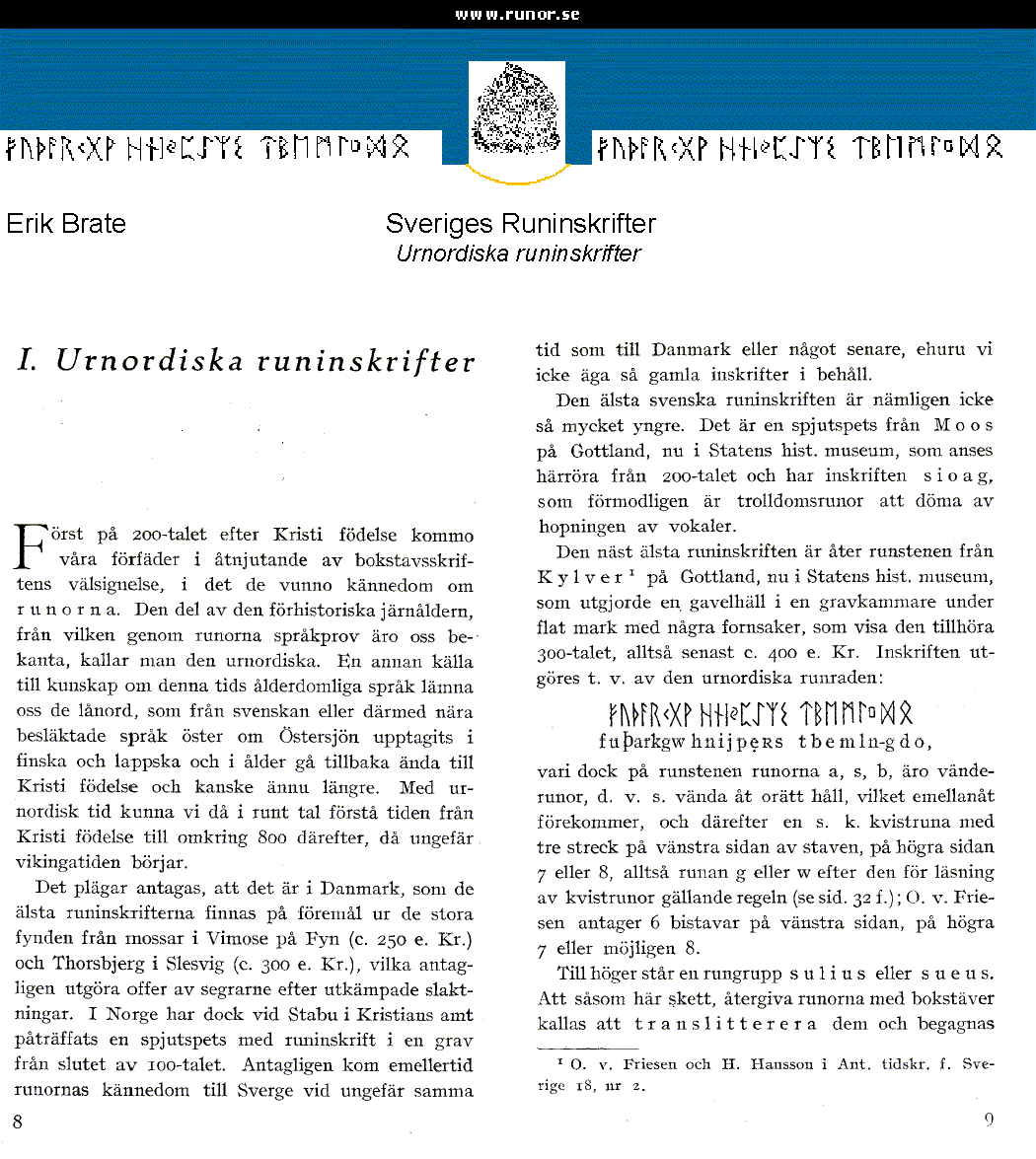
I. Old Nordic runic inscriptions.
In the second century AD did our ancestors enjoy the blessings of the letter scripts, and was aware of the runes. The language from this part of the prehistorically iron age, as we know them from samples of the runes, is called the old Nordic language. Another source to knowledge about this time's old language are given us by the Swedish loanwords adapted in Finnish and Lappish which goes back to 0 AD or even longer. The old Nordic language was spoken approx. from the time of the birth of Christ to about 800 AD when the Viking time started. It used to be assumed, that it is in Denmark the oldest runic insriptions exist. This is on the objects in the big findings in bogs in Vimose on Fyn (c 250 AD) and Thorsbjerg in Slesvig (c 300 AD), which probably provide sacrifice of those killed in bloody wars. There is a find in Norway at Stabu in Kristians county on a spearpoint with runic inscription in a grave from the end of the third century. Probably came the awareness of runes to Sweden at approximately the same
time as to Denmark or some latter, although we not own so old inscriptions in retains.
f u þ a r k g w h n i j p ї R s t b e m l ŋ d o
(1) O. v. Friesen and H. Hansson in "Ant. tidskr. f. Sverige 18, nr 2."